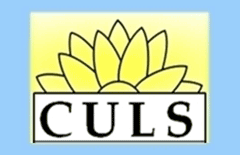Keywords
blended librarianship, instructional design and technology, teaching librarians, academic librarianship, information literacy
Abstract
In 2004, Steven J. Bell and John Shank introduced the term blended librarian to describe an emerging skill set of academic librarians in teaching and learning roles as a combination of “the traditional skill set of librarianship with the information technologist’s hardware/software skills, and the instructional or educational designer’s ability to apply technology appropriately in the teaching-learning process” (p. 373). Several years later, the Association of College and Research Libraries (ACRL) officially recognized instructional design skills as a core proficiency for instructional librarians in the Standards for Proficiencies for Instruction Librarians and Coordinators (ALA, 2008). Yet, alongside the ACRL’s shift from information literacy standards to framework came a parallel shift from the proficiencies for instruction librarians to its revision, entitled Roles and Strengths of Teaching Librarians (ALA, 2017). The Roles and Strengths of Teaching Librarians remains intentionally vague, which may make it difficult for library students and practicing professionals to determine exactly what knowledge, skills, and abilities encompass the formal competencies of instructional designers. Drawing on standards from the Association of Educational Communications and Technology (2012), this paper defines the competencies of instructional design and technology and outlines the specific areas of content and pedagogical knowledge that teaching librarians in the instructional designer role will find most relevant.
Creative Commons License

This work is licensed under a Creative Commons Attribution-Noncommercial-Share Alike 4.0 License.
Recommended Citation
Hovious, Amanda and Smith, Andrew
(2023)
"Blended Librarianship—20 Years Later,"
Kansas Library Association College and University Libraries Section Proceedings:
Vol. 13:
No.
1.
https://doi.org/10.4148/2160-942X.1088
References
American Library Association. (2000). Information literacy competency standards for higher education. http://hdl.handle.net/11213/7668
American Library Association. (2008). Standards for proficiencies for instruction librarians and coordinators: A practical guide. https://www.ala.org/acrl/sites/ala.org.acrl/files/content/standards/profstandards.pdf
American Library Association. (2015, February 9). Framework for information literacy for higher education. http://www.ala.org/acrl/standards/ilframework
American Library Association. (2017, May 15). Roles and strengths of teaching librarians. http://www.ala.org/acrl/standards/teachinglibrarians
Association of College and Research Libraries. (2015). Framework for information literacy for higher education. https://www.ala.org/acrl/standards/ilframework
Association of Educational Communications and Technology. (2012, July 16). AECT Standards, 2012 version. https://www.aect.org/docs/AECTstandards2012.pdf
Bell, S. J., & Shank, J. (2004). The blended librarian: A blueprint for redefining the teaching and learning role of academic librarians. College & Research Libraries News, 65(7), 372-375. https://doi.org/10.5860/crln.65.7.7297
Birgili, B. (2019). Comparative reflection on best known instructional design models: Notes from the field. Current Issues in Emerging eLearning, 6(1), Article 5. https://scholarworks.umb.edu/ciee/vol6/iss1/5
Jonassen, D. H., & Rohrer-Murphy, L. (1999). Activity theory as a framework for designing constructivist learning environments. Educational Technology Research and Development, 47(1), 61-79. https://doi.org/10.1007/BF02299477
McNeill, L., & Fitch, D. (2023). Microlearning through the lens of Gagne’s Nine Events of Instruction: A qualitative study. TechTrends, 67, 521-533. https://doi.org/10.1007/s11528-022-00805-x
National Academies of Sciences, Engineering, and Medicine. (2018). How people learn ii: Learners, contexts, and cultures. National Academies Press. https://nap.nationalacademies.org/read/24783
Newton, P. M., Da Silva, A., & Peters, L. G. (2020). A pragmatic master list of action verbs for Bloom's Taxonomy. Frontiers in Education, 5, Article 107. https://doi.org/10.3389/feduc.2020.00107
Shank, J., & Bell, S. J. (2011). Blended librarianship: [Re]envisioning the role of librarian as educator in the digital information Age. Reference & User Services Quarterly, 51(2), 105–110. https://doi.org/10.5860/rusq.51n2.105
Somerville, M. M., Mirijamdotter, A., & Collins, L. (2006, January). Systems thinking and information literacy: Elements of a knowledge enabling workplace environment. In Proceedings of the 39th Annual Hawaii International Conference on System Sciences (HICSS'06) (Vol. 7, pp. 150-150). IEEE. https://doi.org/10.1109/HICSS.2006.449
Included in
Curriculum and Instruction Commons, Educational Assessment, Evaluation, and Research Commons, Educational Methods Commons, Higher Education Commons, Information Literacy Commons, Instructional Media Design Commons


